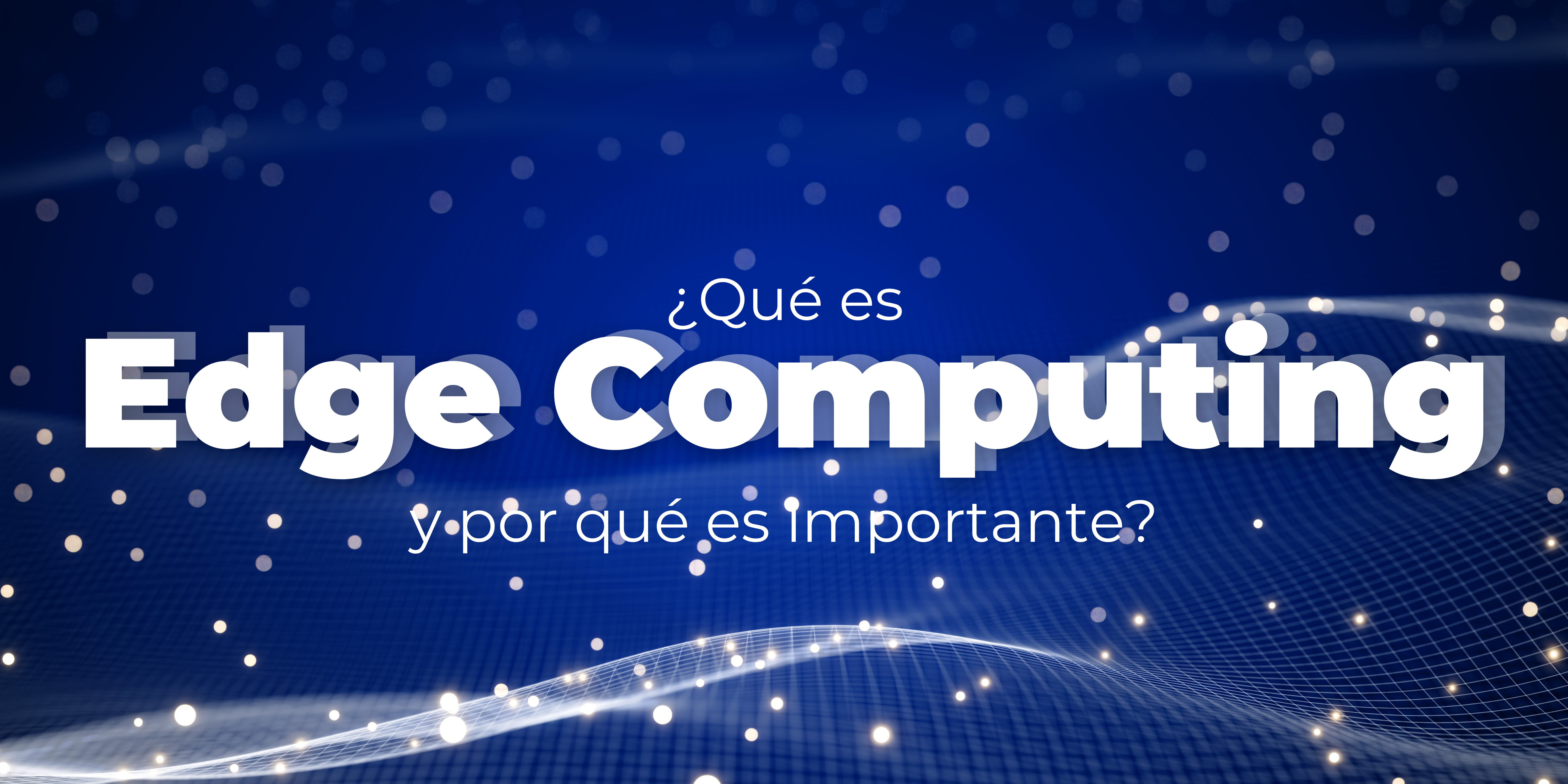
As the digital landscape continues to evolve, terms are emerging that are gaining significant importance.
One of them is edge computing, a technology that defines and revolutionizes the way we interact with data, devices and the Internet.
As it is likely that you have heard this word, but are still not quite sure what it refers to, in this article we tell you what edge computing is and the potential it has for your company.
What is edge computing
Edge computing is a new computing architecture that decentralizes data processing and storage capacity from the cloud to devices close to users, such as routers, security cameras or connected cars.
All of this enables faster and more efficient decision making by eliminating the latency associated with transferring data over long distances.
How edge computing works
Edge computing works by installing processing devices at the edges of the network.
These devices can be small servers, routers or even mobile devices.
When a device generates data, this data is sent to the nearest edge computing device, which processes it and then forwards it to the central data center, if necessary.
Benefits of edge computing
Edge computing has a number of advantages over the traditional way of processing data. Here are some of them:
- Low latency in data processing: By bringing data processing and services closer to devices and end users, the need to send and receive information over centralized networks is eliminated, resulting in a significant decrease in latency, or delay, in data transmission.
- Reduced bandwidth usage: Edge computing can also help reduce bandwidth usage by processing data locally. This is important for applications that generate large amounts of data, such as video streaming and autonomous vehicles.
- Energy efficiency and resource savings: By avoiding the need to transfer large volumes of data over extensive networks, the bandwidth used is reduced, resulting in lower energy consumption.
In addition, by performing data processing on nearby devices or local servers, the load on traditional data centers is reduced, which in turn means savings in infrastructure and resources.
- Improved flexibility. : Edge computing helps applications and services to be deployed and managed closer to users, minimizing the complexity of network configurations.
This is beneficial for applications that must respond to local conditions, such as traffic management and environmental monitoring.
- Distribution: enabling the extension of hosting points and the use of different solutions in the cloud.
Differences between edge computing and cloud computing
Although edge computing and cloud computing share the goal of providing data processing and storage services, there are fundamental differences between the two approaches.
While cloud computing centralizes resources on remote servers and requires a constant connection to the Internet, the edge computing decentralizes them and enables processing closer to the point of origin of the data.
In addition, edge computing reduces bandwidth dependency and minimizes exposure to potential security breaches in the network.
Importance of edge computing today
Today, edge computing has become highly relevant due to the increasing volume of data generated by IoT devicesthe need for faster responses in critical applications and the demand for greater privacy and security in the processing of sensitive information.
So edge computing helps maximize efficiency and minimize the costs associated with sending and processing large volumes of data, while improving latency and user experience.
Edge computing and IoT
The Internet of Things plays a key role in the expansion of edge computing..
The large number of connected devices and data generators in the digital age demands fast and efficient processing.
So by integrating IoT with edge computing, data processing is decentralized, helping devices to perform analysis and decision-making tasks autonomously.
This reduces the load on the cloud and optimizes latency as processing is performed at the edge of the network.
In addition to the Internet of Things, edge computing maintains a close relationship with other key technologies in the digital revolution. These include:
- 5G.
- Big Data.
- Machine Learning.
- Blockchain.
- Artificial Intelligence.
In short, edge computing is much more than a passing trend and will continue to play a crucial role in digital transformation. And the convergence of IoT, 5G and the proliferation of connected devices will only amplify the importance of this technology.
Tell us, did you know what edge computing is?
